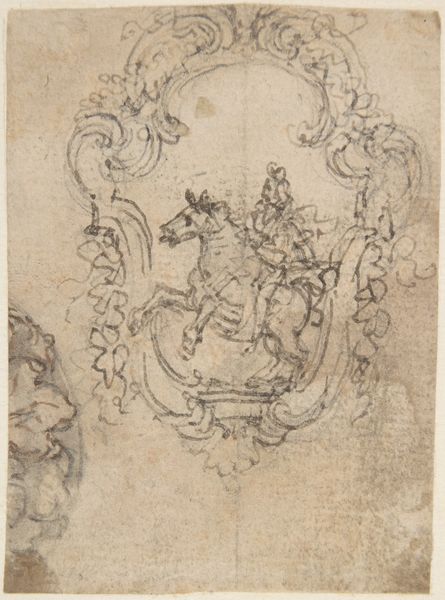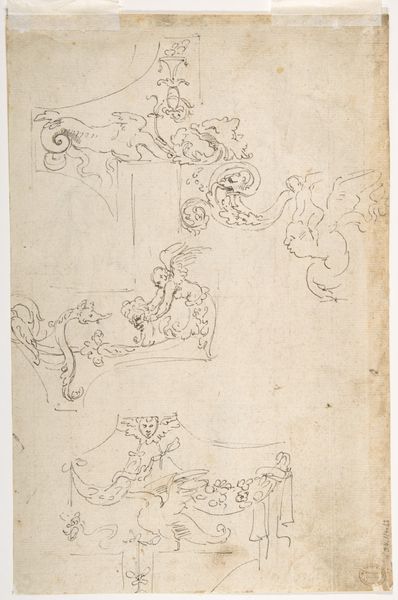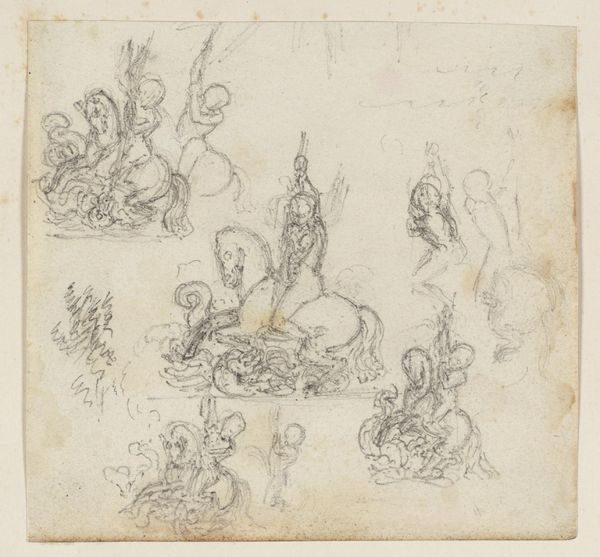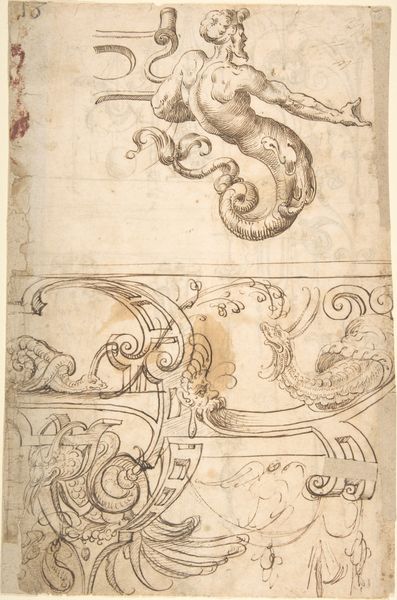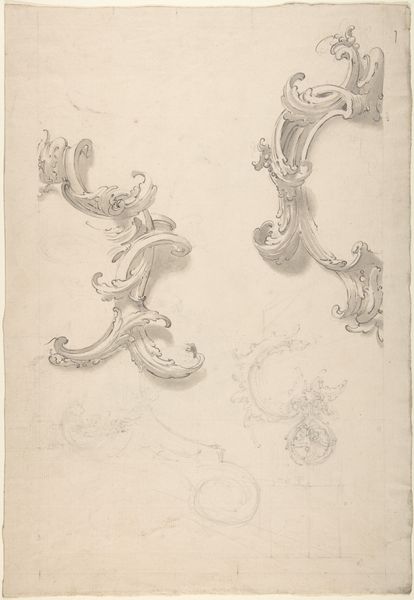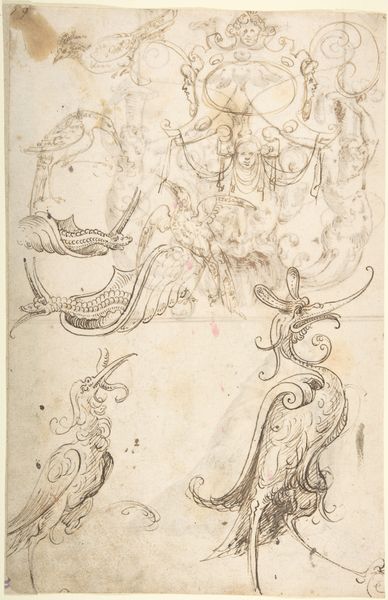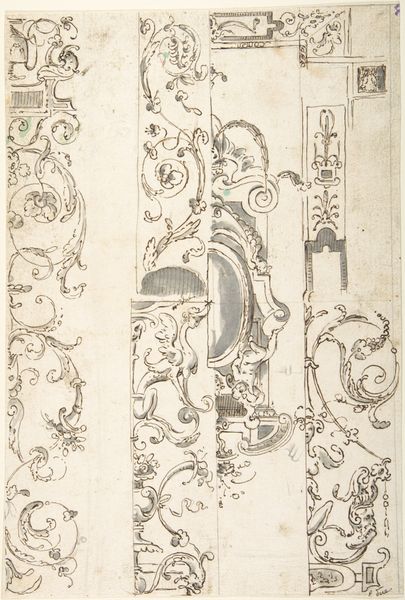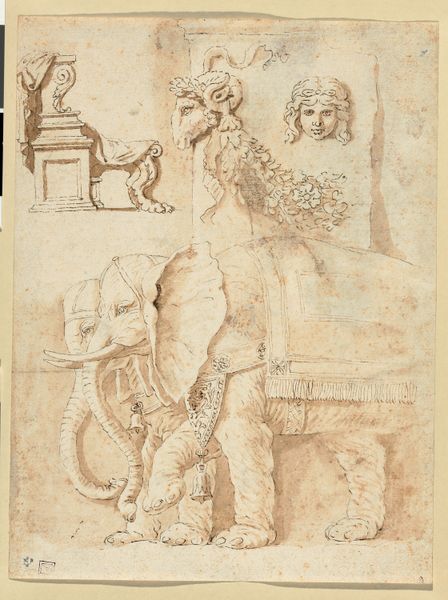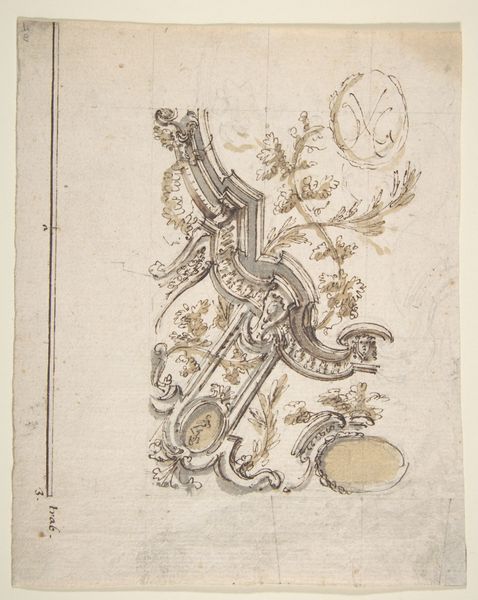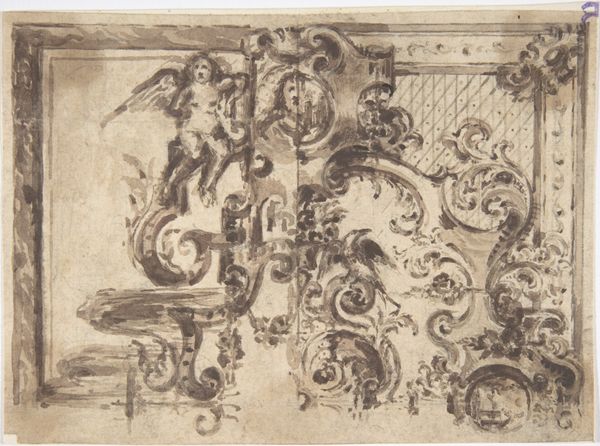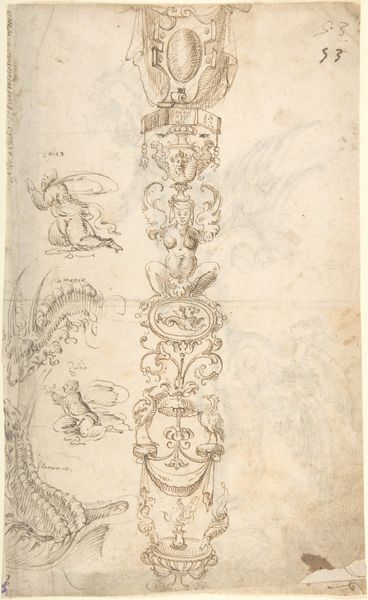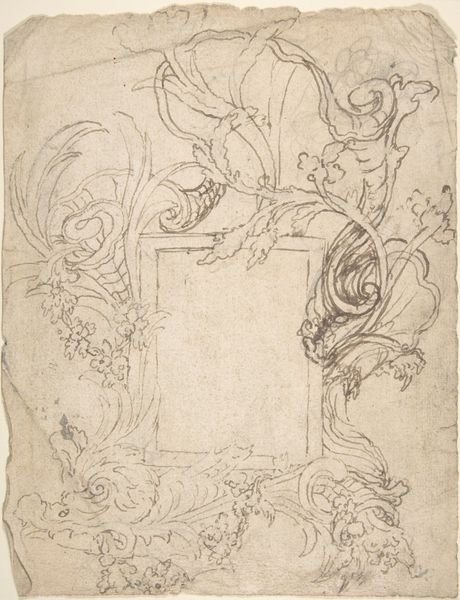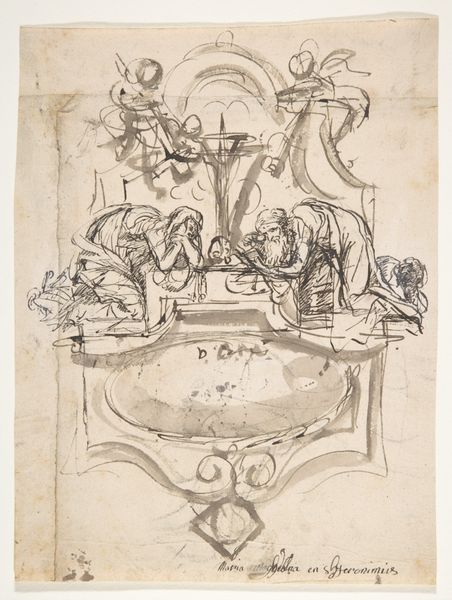
Designs for Ornamental Motifs and for a Herm Supporting a Chimney Piece 1568 - 1625
0:00
0:00
drawing, ornament, print, ink
#
drawing
#
ornament
#
baroque
# print
#
ink
Dimensions: 12 x 8 1/2in. (30.5 x 21.6cm)
Copyright: Public Domain
Curator: Take a look at this fascinating piece titled, "Designs for Ornamental Motifs and for a Herm Supporting a Chimney Piece" created sometime between 1568 and 1625, possibly by Guglielmo Caccia, also known as Moncalvo. It's currently held at the Metropolitan Museum of Art. Editor: Oh, I immediately get a sense of grandiosity from it! The swirls and flourishes feel theatrical, almost demanding to be noticed. It's got this unfinished quality to it, though, that keeps it from feeling overly stuffy. Curator: Right, let's dive into the world it evokes. Ornamentation during this period—late Renaissance and early Baroque—played a huge role in reflecting power and social standing. Think about these motifs within the context of architectural and social aspirations, these patterns symbolized wealth and authority in aristocratic circles. How might these designs play a role within such a rigid social system? Editor: I'm drawn to the physicality of the piece. It looks like a preparatory drawing, possibly with ink washes? You can almost feel the artist working out the construction and placement of each curl and acanthus leaf. It's also interesting to think about who was producing this labor. Craftspeople, often anonymous, were responsible for translating these designs into actual physical objects, creating real status symbols from drawings like these. Curator: Exactly! Considering who was excluded from this elevated class helps contextualize these drawings as tools for social inequity. Whose labor was sacrificed, unacknowledged, for its production? And for what purpose? The elaborate designs became an ostentatious distraction, shifting focus from the struggles of everyday life and towards an idealized, unrealistic existence. Editor: And it’s precisely this that complicates things. We are seduced by beauty and masterful handling of the medium, all while becoming aware of the designs’ socio-historical purpose. One question: did Caccia, a painter, generate such ornamental ideas himself or did he hire workshop draftsmen to fill those preparatory sheets with such embellishments and possible chimera? Curator: Well, that opens up many questions regarding the authorship. But returning to my original intention, these drawings give us a critical lens through which to consider power structures embedded in artistic traditions. Editor: Yes, understanding the material production of these ornaments, coupled with the historical forces behind their use, lets us examine these designs as commodities within their complex social settings. Thanks! Curator: Indeed, let's both remember this exchange the next time we visit an estate with elaborate, period interiors.
Comments
No comments
Be the first to comment and join the conversation on the ultimate creative platform.
